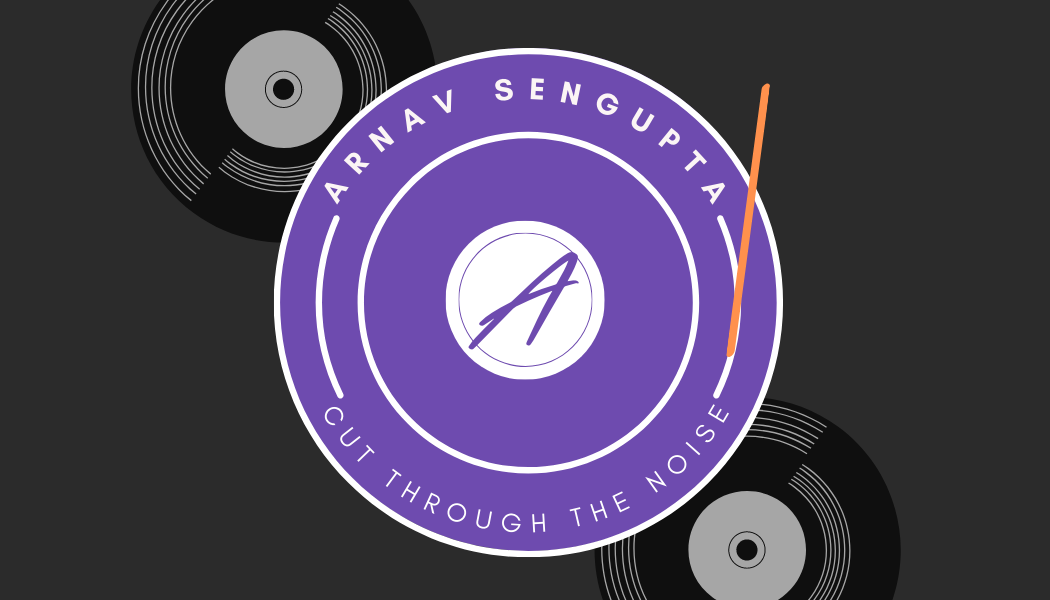Brand Elements
Past created by Arnav SenGupta
Applied IMC (Winter 2023)
Discovering your brand elements can be an overlooked step in the personal branding process, especially when you’re working on other projects. However, it’s important to be thinking about your brand elements as you progress throughout the quarter. Giving yourself a suitable window of time allows you to be creative and to organically discover your brand elements will be worth it down the line before building your website, portfolio, and resume. Here’s how the process went for me.
Firstly, I started putting my brand elements together by brainstorming ideas while listening to music that inspires me. I’m a musician, and music is an endless well of creativity and inspiration for me. I tried to avoid using my “favorite” colors, fonts, and logos so that I could focus on creating a brand that represented my brand, not my preferences. I eventually settled on purple and gold as a color scheme after much deliberation, mostly because I liked the bold nature of that combination. I don’t see myself as a bold person, so my reasoning for using these colors instead of cooler tones was to give myself something to aspire to. If you personal brand represents you in your current state, it would have to change based on how you evolve as both a person and professional. For me, I wanted my brand to be somewhat aspirational, so that I had a goal to work towards.
Next came the logo. I am not a graphic designer, nor do I feel that I have an inherent facility for it. Still, I wanted to design a logo myself in order to build my skills in that field. Since my entire brand was inspired by music I listened to, I wanted my logo to have a musical inspiration as well. I liked the imagery of record walls (walls of a room that are covered in various colored vinyl records), and wanted to implement that in some way with my logo.
Since vinyl records were quickly becoming the primary basis for my brand’s visual identity, I also decided on a tagline at this stage in the process: “cut through the noise”. Again, this served as more aspiration, since I want my work to stand out. There’s also the added, more literal meaning since a record player’s needle “scratches” the vinyl.
These first elements, while incredibly simple, served as a launch point for the rest of the process. After several iterations of my logo, I settled on a purple record with my name on the label, with black records surrounding it. The logo’s simplicity and focus sold me on the idea, and I still use it today.

I found the font “Glacial Indifference” when making my logo, and made that the primary font in my brand elements. Focusing on the other senses, I decided on a “new book” smell that I wanted associated with my brand. Books and records live close together in my mind, and I wanted a smell that was fresh without being overstimulating.
For sound, I made a list of the songs that inspired me. Many of them are in the same key, as I have a form of synesthesia where my brain associates pitches and colors very strongly. When I hear the pitch of music in this list, I “hear” purple, and since music was the very beginning of my creative process, it made sense to make this my brand’s sound. I also added “tape saturation” as a song, because it has a warmth that balances out the brand’s fresh and bold appearance (for any who are curious about taste and feel, my brand tastes like Starbursts and feels like a mechanical keyboard).
For those who are seeking to form their own personal brands, it helps to visualize your brand as a physical space (like a museum, library, or store). What kind of decoration is on the walls? Is it minimalist or maximalist? What does the space smell like, and what noises are you hearing? Placing yourself in the middle of the brand’s “space” was extremely helpful for me when deciding on elements to include.
Again, you want to start this process early in order to allow creativity and authenticity to drive your brand formation. It can be a long process, but if you want to achieve differentiation, it can make all the difference in the world.
